The buildings around Rugeley are a mix of styles
and ages, some dating back to the 17th century.
The buildings pictured here can be found in and
around Market Square. The area was designated
a Conservation Area in 1973 because of its
special architectural and historic interest.
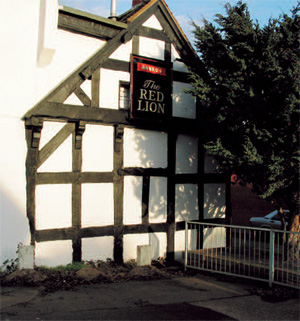
The Red Lion, which is the oldest licensed
premises in the town, is a timber-framed
building dating from about 1600. This type of
timber-frame is called a box frame

The NatWest Bank was originally a
grand residence, built in 1649 by
Erasmus Landor. It was refashioned in
the 18th century, but still has its
original doorway
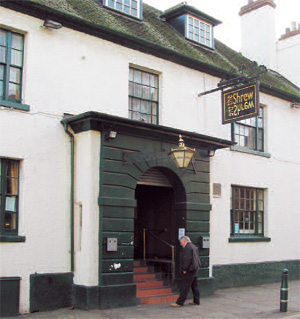
The Shrew in Market Street was used as a
coaching inn since at least 1700. Most of
The Shrew was built in the early 1800s, but
might include parts from the early 1700s.
Originally called The Crown, in 1810 it
became The Talbot Arms. The inn gained
notoriety in 1855 when John Parsons Cook
died there – the last victim of the Rugeley
poisoner William Palmer. In 1856, in an
attempt to disassociate itself from the crime,
the inn was renamed The Shrewsbury Arms,
and is now The Shrew.

The Pig and Bell, another of Rugeley’s many
public houses, is just off the Market Square.
It was built in the 18th century
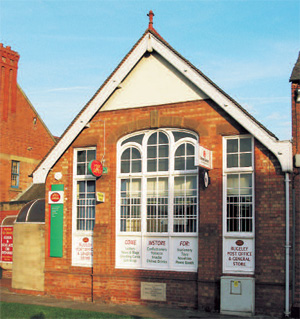
The memorial stone on this Post Office tells us that
it was once the Rugeley Foresters Jubilee Hall and
Institute, built in 1909
|
In 1817 a savings bank was added to the original
Town Hall. In 1844 it was rebuilt and known as
Penny Bank. There were many such banks all over
the country, in which poor people could deposit
money for savings. In 1995,
Penny Bank was rebuilt
once again.
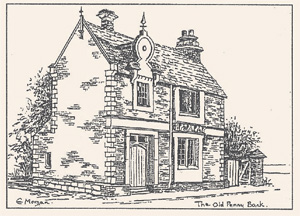
This drawing shows Penny Bank as it was in the 1980s,
when it had fallen into a dilapidated condition.
Drawing courtesy of Edwina Morgan
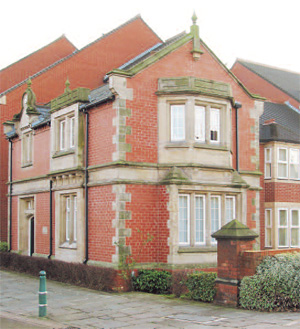
Penny Bank, here in Anson Street, in its third
incarnation
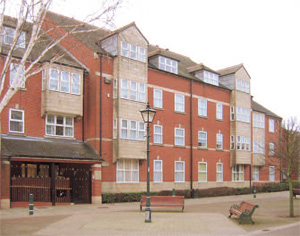
Penny Bank Court is modern housing, built in 1993. Its
design helps it to blend in with older brick buildings.
Many modern buildings of the 1950s and 1960s were
built not of bricks but of concrete, to look ‘state-of-theart’
and impressively modern
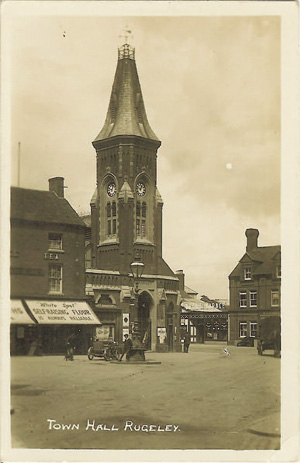
The clock tower is all that is left of the Town Hall of 1878
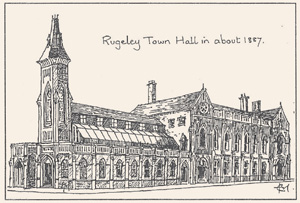
This drawing shows the Town Hall in its heyday.
Penny Bank has been transferred to the far end of
the building
Drawing courtesy of Edwina Morgan
In the late 1870s a major
building project took place in
the Market Square area. The
new buildings included a town
hall, a clock tower, a market
hall, a police station, a fire
station, an assembly room and
offices. All that remains today
is the clock tower. The rest was
demolished in 1978, almost
100 years after it was built.

|
Many of Rugeley’s former shops and businesses are remembered by the town’s inhabitants. Next to the clock tower stood Whitworth’s the grocer’s (maker of delicious pork pies!), later to become George Mason’s. Next to the grocer’s was
Tunnicliff’s, the baker and confectioner. It had been in the town since the late
1800s and remained until the 1950s.
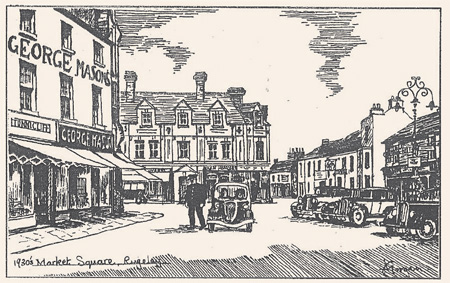
Market Square in the 1930s
Drawing courtesy of Edwina Morgan
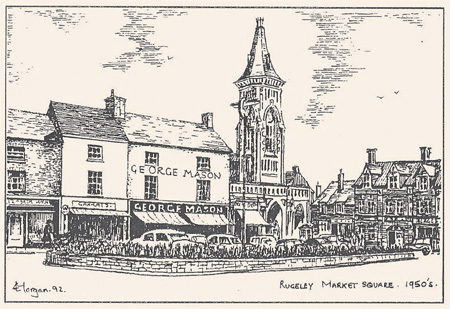
Market Square in the 1950s
Drawing courtesy of Edwina Morgan

This photograph, taken in 1961, shows the area of the town centre that was cleared later that decade to make way for the indoor market. Pictured is Pamela Logan, Miss Colton 1961 title holder
Image courtesy of Staffordshire Arts & Museum Service

Rugeley’s main shopping area before 1973 pedestrianisation

According to local historian Alec Neal, before it closed
in 1958 Rugeley’s Phoenix Tannery supplied the green
leather for the seats in the House of Commons.
Parliamentary Copyright
|
The Phoenix Tannery
There have been tanneries in Rugeley since the 12th century. One of the most recent was the Phoenix Tannery that was established before 1851, and continued until the late 1950s. Hides were soaked in lime before having the hair scraped off them, then laid in open tan pits between layers of oak bark, when water was pumped in. The oak bark was ground by a small factory in Bryan’s Lane.
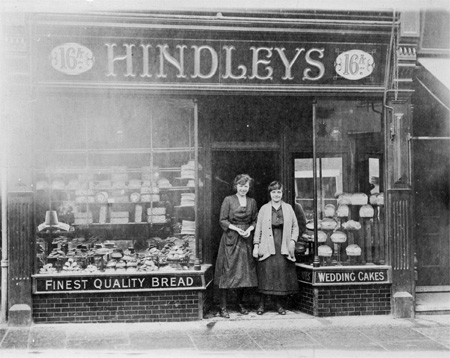
Joseph Richard Hindley’s baker’s shop at 16a Upper Brook Street, c1920-1929.
The firm celebrated its centenary in 1993, when it employed over 70 people.
A Rugeley resident recalled that at their other premises in Wharf Road
they offered the use of the ovens, as they cooled, for local women
to cook their joints of meat.
Image courtesy of Staffordshire Arts & Museum Service
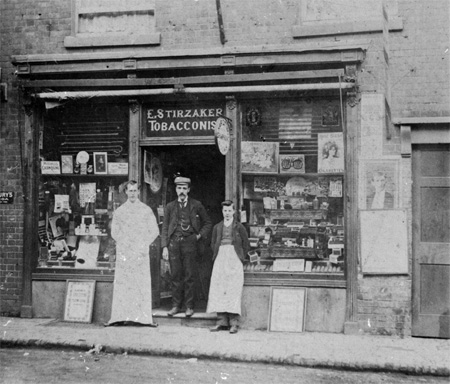
Stirzaker's Tobacconist and Hairdresser’s at 30 Upper Brook Street, c1890-1892. Pictured from left to right are Joe Heatherley, Mr E Stirzaker
and Mr Jack Cope. The shop was later taken over by Joe Heatherley.
Image courtesy of Staffordshire Arts & Museum Service
Harris’ ironmongers and ironworks
Rugeley’s iron production started as early as 1231 and became a major industry. There were a number of ironworks in the town. In 1855 a Mr. Harris opened an ironmongery business in Paris House in Market Square. It later moved to the corner of Anson Street, and opened its own foundry, the Phoenix Iron Works, a few doors away. The foundry made metal garden equipment, including garden rollers.
Degg’s Garage
Mr Degg, who had started out here in Anson Street making and repairing bicycles, ran a successful garage. In 1902 he became the first car owner in
Rugeley. At this time, his garage was the only one between Birmingham and Manchester. During the Great War, he ran a taxi service for the soldiers stationed in nearby military camps. One of the taxis was driven by his sixteen-year-old daughter. The garage closed in the 1960s.
The Palace Cinema
Next to Mr Degg’s garage was the Palace Cinema, where the library now stands. In the days of silent films a violinist and a pianist provided live music, with kettle drums adding extra impact to the dramatic scenes.
|





















